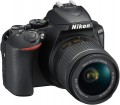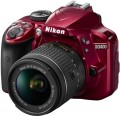DxOMark rating
The result shown by the camera in the DxOMark ranking.
DxOMark is one of the most popular and respected resources for expert camera testing. According to the test results, the camera receives a certain number of points; The more points, the higher the final score.
Light sensitivity (ISO)
The sensitivity range of a digital camera matrix. In digital photography, light sensitivity is expressed in the same ISO units as in film photography; however, unlike film, the light sensitivity of the sensor in a digital camera can be changed, which gives you more options for adjusting shooting parameters. High maximum light sensitivity is important if you have to use a lens with a low aperture (see Aperture), as well as when shooting dimly lit scenes and fast-moving objects; in the latter case, high ISO allows you to use low shutter speeds, which minimizes image blur. However, note that with an increase in the value of the applied ISO, the level of noise in the resulting images also increases.
No AA filter
No AA filter in camera design.
The AA filter is responsible for "anti-aliasing" — the elimination of the moiré effect. This effect can occur when shooting objects with a lot of thin horizontal or near-horizontal lines (for example, a brick wall at a great distance, or a suit made of a certain type of fabric). It leads to the appearance of a characteristic pattern in the picture, which, usually, is inappropriate; to eliminate this phenomenon, an AA filter is provided. At the same time, this feature is said to reduce the overall sharpness of the image; therefore, it may not be available in some cameras. These are mainly professional models: the absence of an AA filter gives the photographer additional features, but puts forward increased requirements for shooting skills.
HDR
Camera support for
HDR.
HDR stands for High Dynamic Range. The main application of this technology is shooting scenes with significant differences in illumination, when there are both very bright and very dark areas in the frame. The features of modern digital photography are such that in the normal shooting mode, only a rather narrow range of brightness can be correctly processed; as a result, with a large difference in illumination, the image contains either too dark or overexposed fragments. HDR avoids this phenomenon: in this mode, the camera takes several shots with different exposure settings, and then glues them together in such a way as to reduce the brightness in bright places and increase in dark places. This allows you to shoot, for example, landscapes against the backdrop of a bright sunset sky, the interiors of dimly lit buildings with bright windows, etc. In addition, HDR can also be used as an artistic technique — to give the picture an unusual colour scheme.
Note that this effect can also be achieved using post-processing in a graphics editor; however, using the camera is much more convenient.
Exposure compensation
The ability to manually (or automatically, according to predetermined parameters) change the exposure parameters during shooting, that is, the amount of light falling on the matrix. It is used when the automatically selected exposure parameters do not give a satisfactory result — for example, in difficult conditions, when the illumination of the main subject and the background is very different. The camera's exposure compensation capabilities are recorded in the format "± x EV, in y EV increments", such as "± 3 EV, in 1/2 EV increments". The first digit indicates the maximum amount by which the exposure can be changed from the original value by the compensation process; the second is the step (step) with which the change occurs. EV is a specific unit of measure for exposure; a 1 EV change in exposure means a 2x change in the amount of light hitting the sensor. An increase in EV indicates an increase in the amount of light due to opening the aperture or an increase in shutter speed, a decrease indicates the opposite. All modern cameras with exposure compensation function are capable of producing it “in both directions”.
Auto bracketing
Bracketing is called shooting a series of frames, in which in each next frame the shooting parameters (exposure, white balance, focus, etc.) change by a certain amount. This allows, for example, to choose the most successful shot from several options, or to determine the effect of changing the settings in one direction or another. Auto bracketing allows you to take such shots automatically. At the same time, it should be taken into account that the set of parameters changed in the process may differ in different camera models. For example, some devices are able to change only the exposure, others — the exposure and/or white balance, etc.
File recording formats
File formats in which the camera can record video. Given that the footage is designed to be viewed on an external screen, you should make sure that the playback device (DVD player, media centre, etc.) is able to work with the appropriate formats. At the same time, many camera models themselves can play the role of a player by connecting to a TV via an audio / video output or HDMI (see the corresponding paragraphs of the glossary). And if the video materials are to be viewed on a computer, you should not pay special attention to this parameter at all: problems with format incompatibility in such cases rarely occur, but are usually solved by installing the appropriate codec.
Maximum video length
Restrictions on the length of the recorded video provided in the design of the camera. In some models, the recording time is limited in time (for example, 30 minutes) — thus, to record a longer video, it will have to be split into separate clips. In others, the duration depends only on the amount of free memory — you can record as long as there is enough space. There is also a combination of these options; in such models, video recording stops as soon as either of the two limits is reached.
Connection ports
— USB C. A universal USB interface that uses a Type C connector. USB ports themselves (all types) are used mainly for connecting the camera to a computer for copying footage, managing settings, updating firmware, etc. Specifically The Type C connector is comparable in size to earlier miniUSB and microUSB, but has a reversible design that allows the plug to be inserted in either direction. In addition, USB C often operates according to the USB 3.1 standard, which allows for connection speeds of up to 10 Gbps - a useful feature when copying large amounts of content.
-
HDMI. A comprehensive digital interface that allows you to transmit video (including high resolution) and audio (up to multi-channel) over a single cable. The presence of such a port makes it possible to use the camera as a player: it can be directly connected to a TV, monitor, projector, etc. and view your footage on the big screen. In this case, broadcast capabilities can include not only video playback, but also demonstration of captured photos in slide show mode. HDMI inputs are present in most modern video equipment, and connection is usually not a problem.
Nowadays, there are several versions of the HDMI interface on the market:
- v 1.4. The oldest version currently relevant, released in 2009. However, it supports 3D video, is capable of working with resolutions up to 4096x2160 at a speed of 24 fps, and in Full HD resolution the frame rate can reach 120...fps. In addition to the original v.1.4, there are also improved modifications - v.1.4a and v.1.4b; they are similar in basic capabilities, in both cases the improvements affected mainly work with 3D content.
- v2.0. Significant HDMI update introduced in 2013. In this version, the maximum frame rate in 4K has increased to 60 fps, and support for ultra-wide 21:9 format can also be mentioned. In update v.2.0a, HDR support was added to the interface capabilities; in v.2.0b this function was improved and expanded.
- v 2.1. Despite the similarity in name to v.2.0, this version, released in 2017, was a very large-scale update. In particular, it added support for 8K and even 10 K at speeds up to 120 fps, and also further expanded the capabilities for working with HDR. This version was released with its own cable - HDMI Ultra High Speed; all features of v.2.1 are available only when using cables of this standard, although basic functions can be used with simpler cords.
— Headphone output. Audio output allows you to connect headphones to the camera. As a rule, it is represented by a classic 3.5 mm mini-jack. The presence of such a connector provides the ability to monitor sound during video recording in real time. This is especially important when filming interviews, vlogs and other similar projects.
— Microphone input. Specialized input for connecting an external microphone to the camera. External microphones are significantly superior to built-in microphones in sound quality. Firstly, they are not so sensitive to the camera’s “own” sounds - from buttons, control wheels, focus motors, etc. (and if the microphone uses a long wire and is not attached to the body, these sounds will not be heard at all). Secondly, external microphones themselves have more advanced characteristics. On the other hand, their use is justified mainly for professional video recording; therefore, the presence of a microphone input, as a rule, corresponds to advanced video recording capabilities

